V is for Veloce — Super Fast
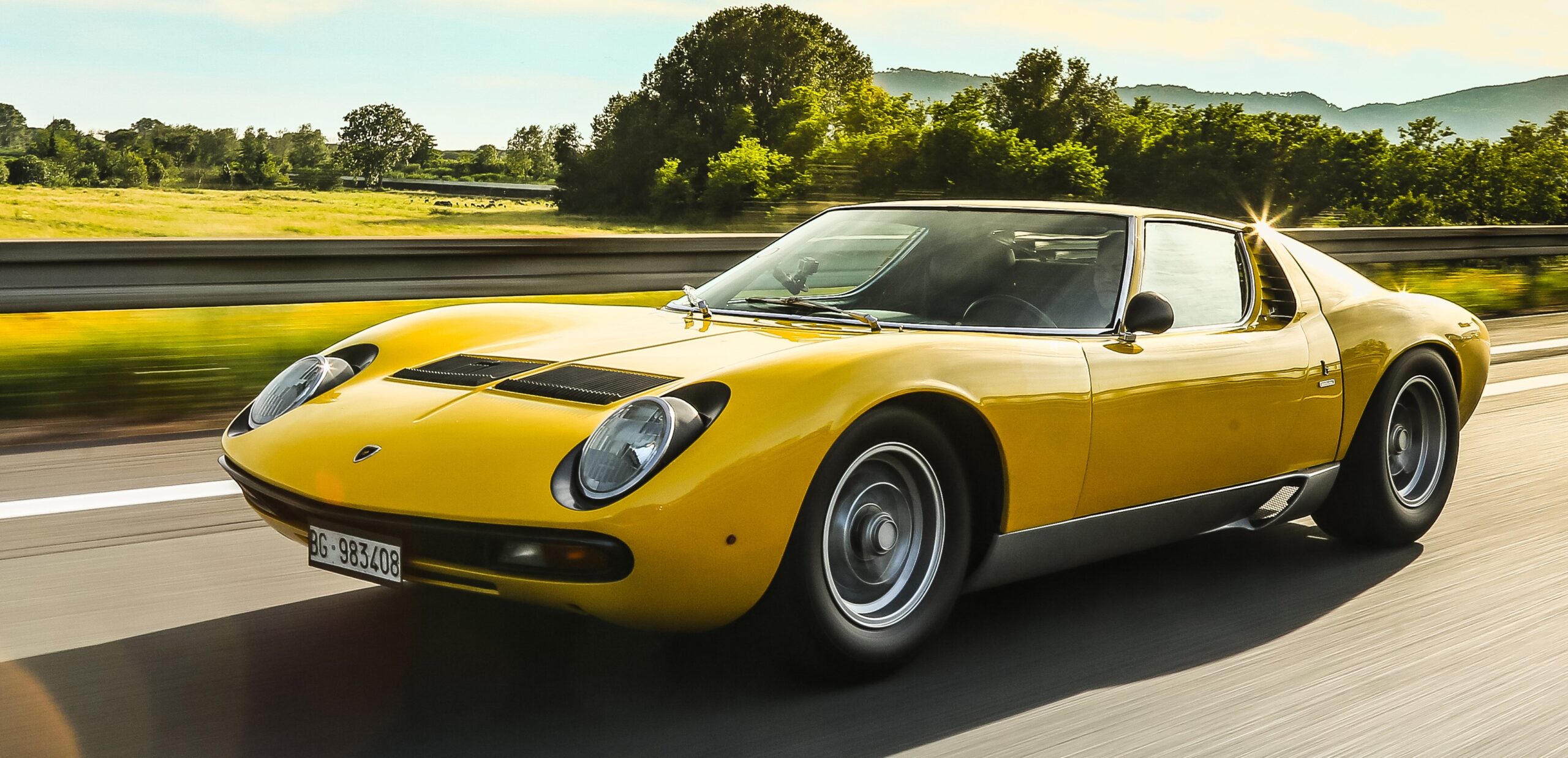
The 1971 Miura SV is considered the highest expression of the ‘supercar’ concept of its time and the best of all the Miura versions produced, says Lamborghini. (Photo courtesy of Lamborghini)
The Lamborghini Miura SV was officially unveiled at the Geneva Motor Show in March 1971. As the last evolution of the P400 line, the Miura SV became the most sought-after production car made by Lamborghini, the company said in an April 14 release. “[The Miura] is considered the highest expression of the ‘supercar’ concept of its time and the best of all the Miura versions produced.”
Building on the Miura S nameplate, the V stands for veloce (super fast). But the SV’s huge sales success would replace the S.

This Rosso Corsa Miura SV was restored by Lamborghini’s Polo Storico for Jean Todt, former rally racer, former Scuderia Ferrari Formula 1 team principal and longtime president of the Fédération Internationale de l’Automobile. (Remi Dargegen)
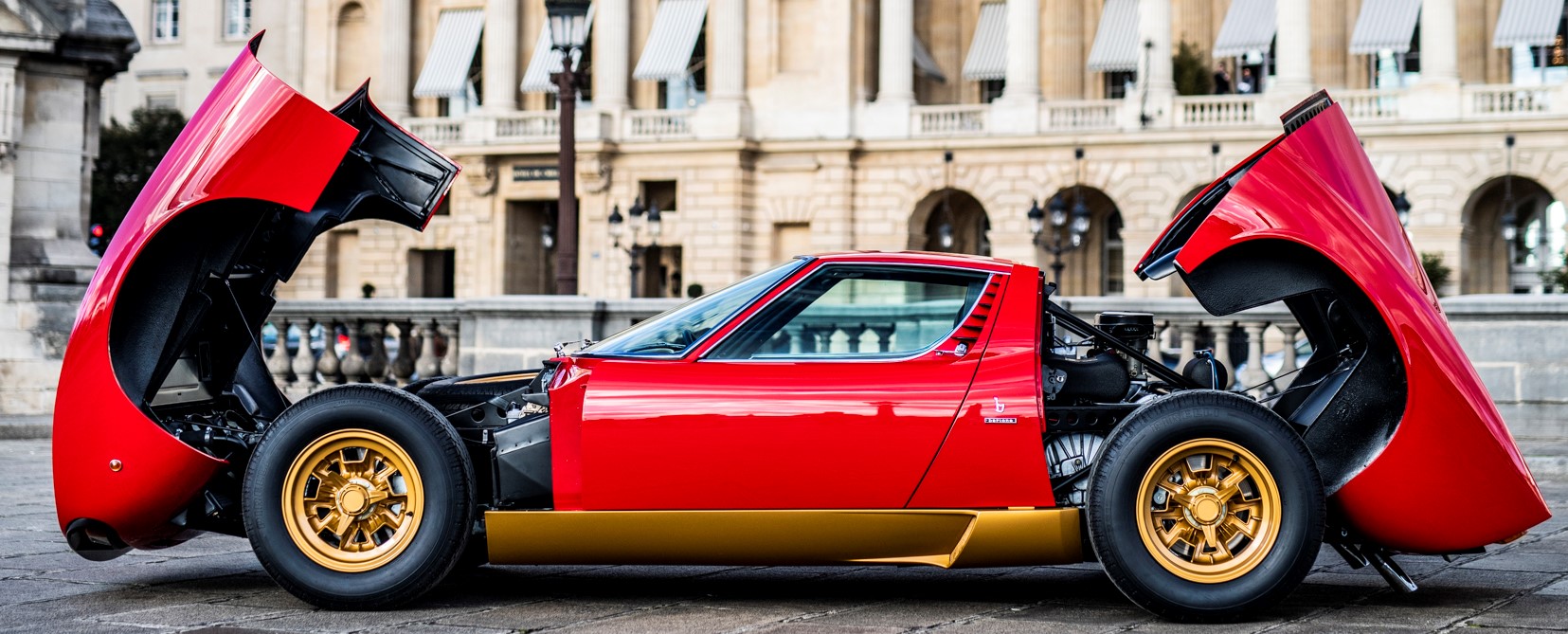
(Remi Dargegen)
Gian Paolo Dallara and Paolo Stanzani, Lamborghini’s chief engineers at the time, were the creators of the Miura and Miura S. They confirmed that the SV version benefitted from the experience gained during the first five years of Miura production.
The Miura SV was quite different technically and stylistically from the other Miuras, the P400 and P400 S. The SV maintained the same general layout and 4.0-liter 12-cylinder transversely mounted rear-mid engine. Many changes were structural. The SV had a stiffer and reinforced chassis and a revised rear suspension system with different anchor points and arms. It also had a track widened by a little more than 5 inches (130 mm).
A new setting for the four Weber triple-barrel carburetors boosted the SV’s engine to 385 horsepower at 7,850 rpm. And the 12-cylinder’s peak torque increased to 294 foot-pounds at 5,750 rpm.

The SV has wider rear fenders and unique taillights.
A separate lubrication system between the engine and gearbox was a hugely important technical improvement, the company said.
The Miura SV’s official top speed was just over 180 mph (290 km/h). Acceleration to 62 mph took 6.9 seconds, which was record performance back then.
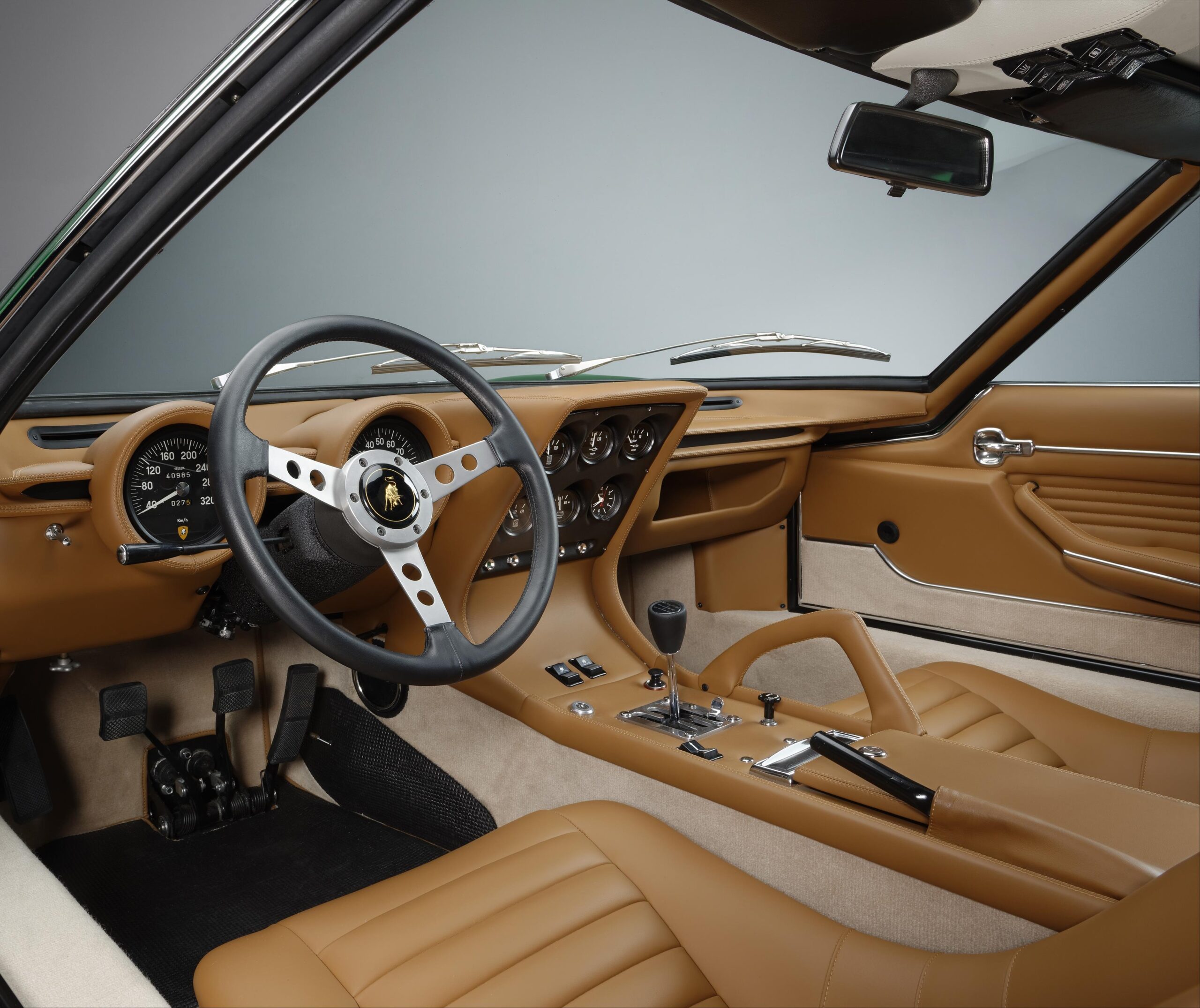
The SV interior was updated with more leather and chrome.
Now fitted with staggered-size tires, the rim design had a new and sportier appearance. Most SV customers ordered them with a gold finish, Lamborghini says.
The revised SV has wider rear fenders, differently designed taillights, and a new front hood with an air intake for the radiator.
Eyelashes Are Gone
One of the most important visual changes to the Miura SV was the deletion of the famous “eyelashes” around the headlights. There was no real technical reason for this esthetic modification and creating them was a time-consuming step.
“However, for his own personal Miura SV — the only one to officially adopt this specification — Ferrucio Lamborghini asked for the eyelashes around the headlights to remain,” Lamborghini said in the release.
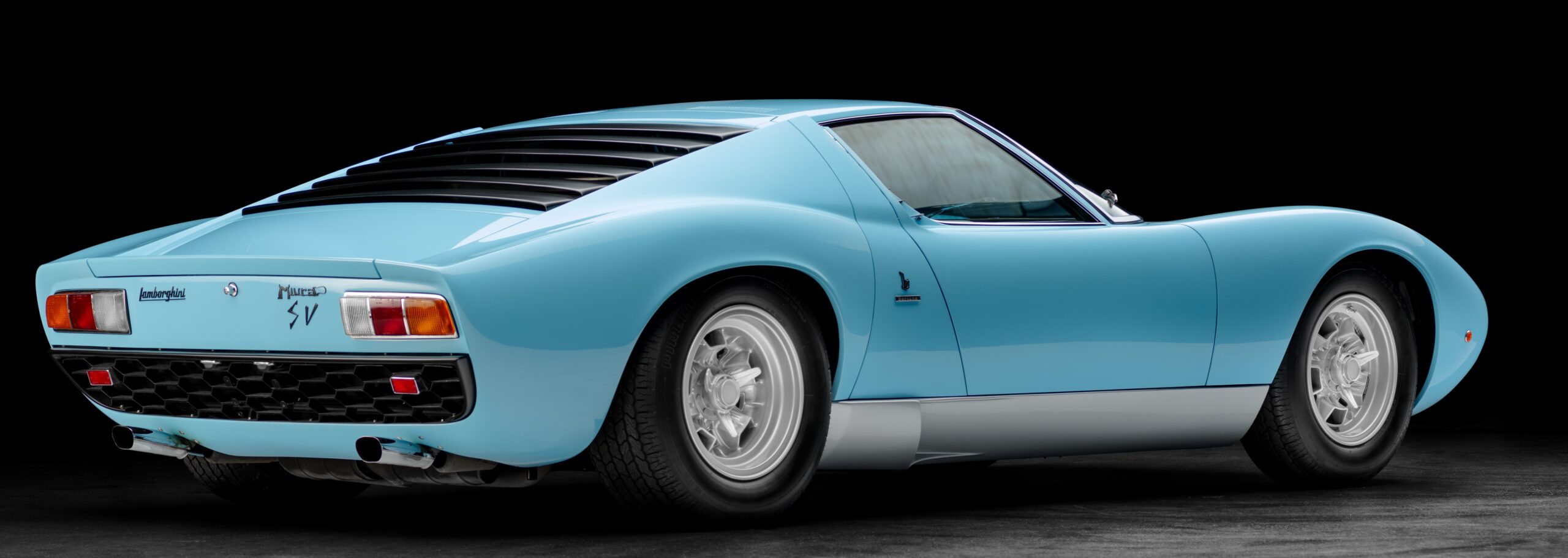
A Miura SV in Azzurro Cielo.
The SV’s interior was better finished and more modern looking than that of the previous versions. There was more leather and various chromed details.
The Miura SV was taken out of production in early 1973 after 150 units had been produced. In 1975, however, a final SV was expressly manufactured for Walter Wolf. The renowned businessman was also a Formula 1 racing supporter and team owner of Walter Wolf Racing. His SV is now on view at the Lamborghini Museum, MUDETEC, in Sant’Agata Bolognese.
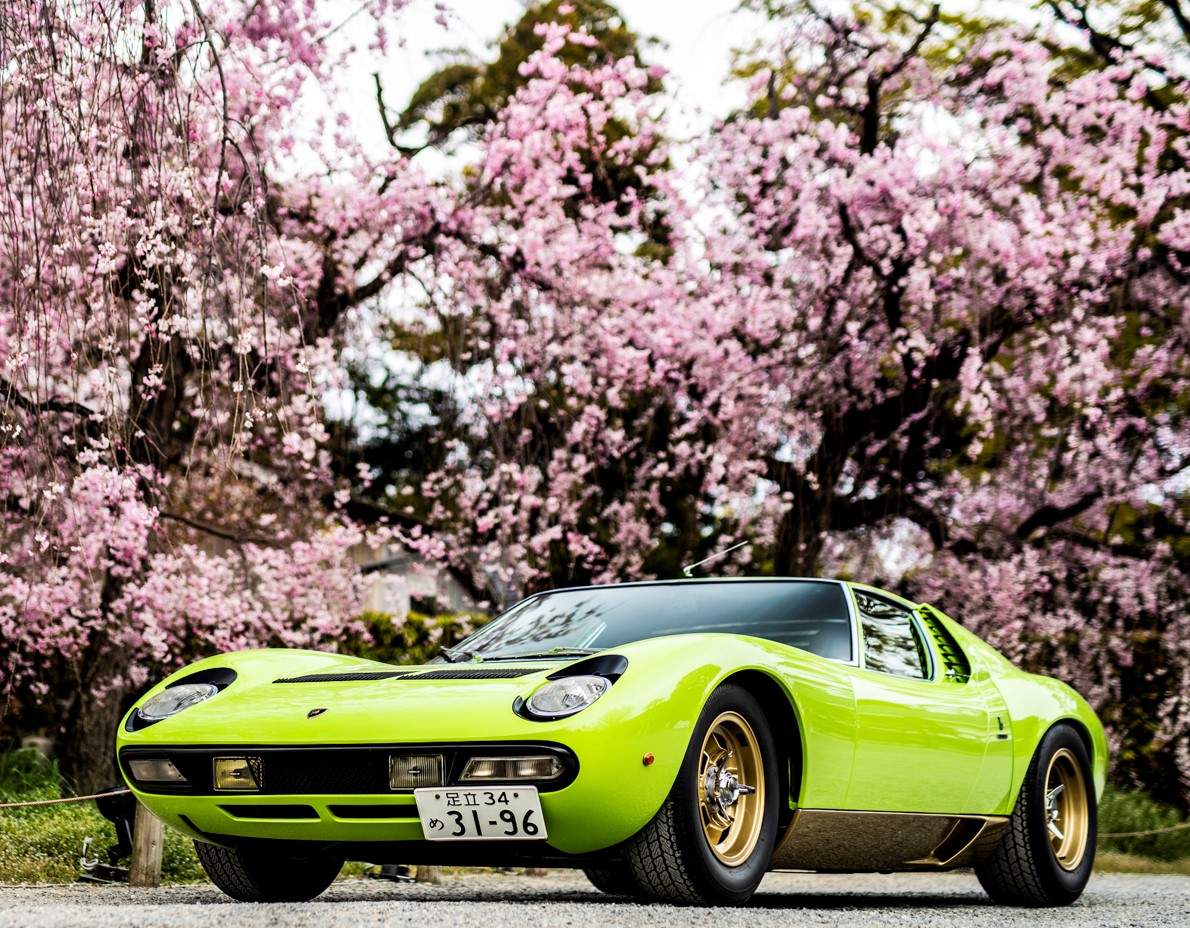
This 1971 Miura SV earned ‘Best Lamborghini’ at the 2019 Concorso d’Eleganza Kyoto (Japan).
The end of Miura SV production ended an era in which speed and sinuous lines predominated. For many, it remains the most beautiful car ever produced in series.
Lamborghini Polo Storico
Opened in 2015, Lamborghini Polo Storico is an Automobili Lamborghini department that supports the preservation of classic Lamborghini vehicles produced up to 2001. The special department can provide restoration services, spare parts, and certification.
Polo Storico also curates the archive and includes information relating to the models manufactured in Sant’Agata Bolognese. The archive includes the first sketches to the production files and the original technical drawings.


